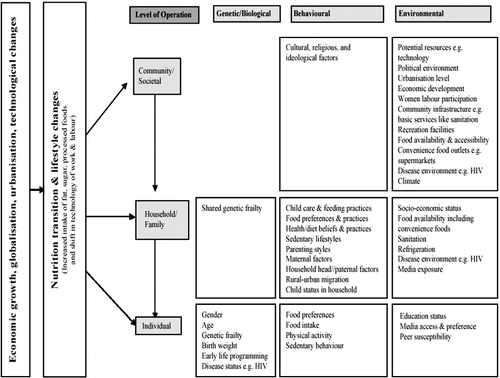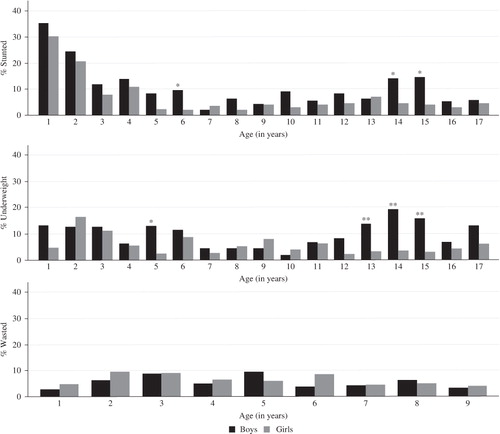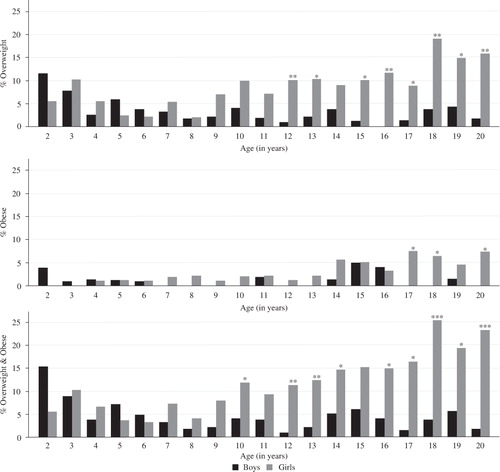Figures & data
Fig. 1. Conceptual framework on nutrition transition and hierarchical organisation of factors influencing a child's nutritional status.
Note: The framework is adapted from Popkin's (2003) model of nutrition transition (Citation2), and Griffiths (2004) framework of interpreting community, family and individual effects on child weight status Citation24. It is also informed by the Food and Agriculture Organization's (FAO)'s (2004) model on changes in food systems Citation25, and Davison's (2001) ecological model for childhood obesity Citation26.

Fig. 2. Prevalence of stunting and underweight for children aged 1–17 years (n=3,070) and wasting for children aged 1–9 years (n=1,641) by sex, Agincourt sub-district, South Africa, 2007. Significant difference by sex: *p-value < 0.05, **p-value < 0.01, ***p-value < 0.001. Source: Kimani-Murage et al. 2010 Citation20.

Fig. 3. Prevalence of overweight, obesity & combined overweight and obesity for children aged 2–20 years (n=3,358) by age and sex, Agincourt sub-district, South Africa, 2007. Significant difference by sex: *p-value < 0.05, **p-value < 0.01, ***p-value <0.001. Source: Kimani-Murage et al. 2010 Citation20.

Table 1. Predictors of weight status and central obesity among adolescents 10–20 years (n=1,848), Agincourt sub-district, rural South Africa, 2007
Table 2. Linear regression analysis for predictors of height-for-age, weight-for-age, and weight-for-height z-scores among children aged 12–59 months (n=671), Agincourt, South Africa (2007)
Table 3. Logistic regression analysis for predictors of stunting, underweight, and wasting among children aged 12–59 months (n=671), Agincourt, South Africa (2007) Variable1
